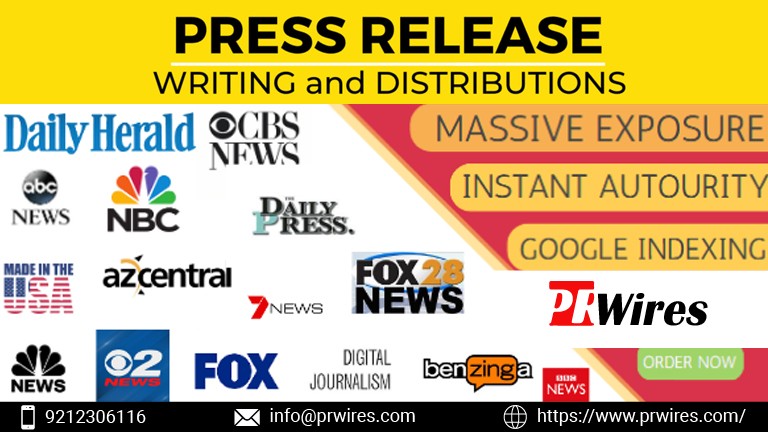The rise of artificial intelligence (AI) has revolutionized industries worldwide, and one of the most accessible AI models today is OpenAI’s ChatGPT. If you're a subscriber to ChatGPT Plus, you've probably already enjoyed the benefits of this premium service, such as faster response times, access to GPT-4, and priority access during peak hours. However, ChatGPT Plus offers something even more exciting: the ability to create your own custom GPT chatbot tailored specifically to your needs.
In this comprehensive guide, we’ll walk you through the process of building your custom GPT chatbot, explain how it can be used for personal and business purposes, and cover the benefits of harnessing ChatGPT’s full potential.
Why Build a Custom GPT Chatbot?
Before diving into the technical steps, it’s essential to understand why creating a custom GPT chatbot is a valuable endeavor.
Personalization: Instead of relying on generic responses, a custom chatbot can be trained on your unique preferences, datasets, and objectives. Whether you’re looking for a virtual assistant for your business or a personal AI to help manage your tasks, custom chatbots cater to individual needs.
Business Use Cases: Custom GPT chatbots can enhance customer service, manage inquiries, process orders, or even help generate leads. Having a tailored chatbot for your business saves time, improves customer satisfaction, and allows for automation that scales your operations.
Enhanced Creativity: For content creators, developers, or educators, a chatbot can assist in brainstorming ideas, solving problems, and providing suggestions that align with your specific requirements. This personalized assistance goes beyond the one-size-fits-all approach.
Cost and Time Efficiency: Automating routine interactions with a custom chatbot reduces manual work, allowing businesses and individuals to focus on more critical tasks. By leveraging GPT's natural language capabilities, you can handle thousands of conversations simultaneously, without needing an extensive support team.
Step-by-Step Guide to Creating a Custom GPT Chatbot
1. Sign Up for ChatGPT Plus
The first step is to become a subscriber of ChatGPT Plus. OpenAI offers a premium subscription model that provides users with access to the more advanced GPT-4 model. If you're already subscribed, you're good to go!
Here’s how to sign up:
- Visit the ChatGPT website and log in with your OpenAI account.
- Navigate to the settings or upgrade section, and select "ChatGPT Plus."
- Complete the payment process to unlock all premium features.
Once you have ChatGPT Plus, you can use the GPT-4 model, which has superior language understanding and generation capabilities compared to GPT-3.5, making it ideal for creating high-quality chatbots.
2. Define Your Chatbot’s Purpose
Before getting started with the technical process, think about what you want your custom chatbot to do. Identifying the primary purpose will help in structuring the chatbot’s responses and behavior.
Common use cases include:
- Customer Support: A chatbot that answers FAQs, provides product information, or handles simple customer requests.
- Content Generation: A chatbot to help with writing blog posts, articles, or social media content.
- Virtual Assistant: A chatbot that helps manage your calendar, set reminders, or find relevant information quickly.
- Learning Assistant: A tutor-like chatbot that explains complex concepts, answers questions, or assists in learning new topics.
Knowing your chatbot's function will help you define its tone, personality, and style of interaction.
3. Collect Training Data (Optional but Helpful)
One of the most powerful aspects of creating a custom GPT chatbot is the ability to fine-tune it. This requires a set of training data to help the model understand the specific language, tone, and preferences you want it to follow.
- Text Data: Gather text files, conversation logs, or FAQs that are relevant to your purpose. For example, if you’re building a customer service bot, you might collect customer emails or chat transcripts.
- Customization Prompts: Think about how you'd like the chatbot to greet users, respond to queries, or handle specific scenarios. These can be incorporated into the training data.
While OpenAI doesn't currently allow users to fine-tune models on a personal level, this could become available in the future. For now, it’s useful to have a collection of data to guide your interactions and adjust your chatbot's responses manually.
4. Create the Chatbot using the API
To create a truly custom GPT chatbot, you’ll need access to OpenAI’s API. Fortunately, the ChatGPT Plus subscription also provides API access.
Here’s how to get started:
Get API Access:
- Sign in to your OpenAI account and navigate to the API section. You’ll find a dashboard where you can generate an API key. This key allows you to interact with GPT models programmatically.
- Copy the API key as you’ll need it for integration.
Build the Bot: Now, you can integrate the API into your preferred platform. Depending on your technical expertise, this can be done in several ways:
Python (for Developers): If you’re comfortable with Python, you can build your chatbot using OpenAI’s Python client library.
python
import openai
openai.api_key = 'your-api-key'
def generate_response(prompt):
response = openai.Completion.create(
engine="text-davinci-004",
prompt=prompt,
max_tokens=150
)
return response.choices[0].text.strip()
while True:
user_input = input("You: ")
bot_response = generate_response(user_input)
print(f"Bot: {bot_response}")
Using No-Code Platforms: For non-developers, there are several no-code platforms that allow you to integrate GPT models without writing code. Tools like Zapier, Integromat, or Bubble.io offer ways to integrate GPT into your workflows.Bot Integration for Popular Platforms: If you're looking to add the chatbot to a website, social media, or messaging app, several platforms offer integration options. Tools like ManyChat or Tidio provide GPT-powered chatbot builders that allow API integration.
5. Set Up Prompts and Personas
Once your chatbot is technically functional, the next step is to define its prompts and personas. This is where you personalize your chatbot's responses.
Set Default Prompts: These are the predefined instructions the chatbot uses to generate responses. You can define greeting messages, error responses, or fallback answers when the bot is uncertain.
Persona Development: Do you want the chatbot to be friendly, formal, or playful? Choose a personality that aligns with your brand or personal style. For instance, if you’re creating a customer service chatbot, you might want it to be professional yet approachable.
You can define personas with the following examples:
prompt = """
You are a helpful customer service bot that assists customers with their issues.
You are polite and always strive to solve problems quickly and efficiently.
If you don't know the answer, redirect them to human support.
"""
This instructs GPT on how to behave during the interaction.
6. Test and Fine-Tune the Chatbot
Once your chatbot is set up, it’s important to thoroughly test it. Engage in various conversations with the chatbot to evaluate its accuracy, tone, and responses. During the testing phase:
- Monitor responses: Are the answers relevant and helpful? Adjust your prompts if the bot strays off-topic.
- Refine the persona: Based on user feedback, you may need to tweak how the chatbot interacts with users.
- Evaluate edge cases: Test the chatbot on complex or ambiguous questions to ensure it responds appropriately or redirects the query as needed.
7. Deploy and Monitor
Once you’re satisfied with the chatbot’s performance, it’s time to deploy it. Whether you’re using the bot on your website, app, or social media, continuous monitoring is essential.
- User Feedback: Encourage users to provide feedback on the chatbot’s performance. This helps in identifying areas for improvement.
- Ongoing Updates: Keep updating your chatbot’s knowledge base to ensure it stays relevant and up-to-date with new information or changes in your industry.
Creating your own custom GPT chatbot with ChatGPT Plus unlocks a world of possibilities. Whether for personal use, business automation, or creative assistance, a tailored chatbot allows you to interact with AI in ways that were previously unimaginable. By following the steps outlined in this guide, you can build a chatbot that fits your exact needs, providing value, enhancing efficiency, and improving user experience.
FAQs
1. What is ChatGPT Plus, and why do I need it to create a custom GPT chatbot?
ChatGPT Plus is a premium subscription offered by OpenAI that provides access to the GPT-4 model, faster response times, and priority access during peak hours. The advanced capabilities of GPT-4 make it ideal for creating custom chatbots, as it offers more accurate language understanding and generation compared to the free version running on GPT-3.5.
2. Do I need programming skills to create a custom GPT chatbot?
Programming skills are helpful, especially if you want to integrate the chatbot into specific applications or platforms using OpenAI’s API. However, you don’t necessarily need to know how to code. Several no-code platforms like Zapier, ManyChat, or Bubble.io allow you to create and integrate custom GPT chatbots without writing code.
3. What platforms can I deploy my custom GPT chatbot on?
You can deploy your custom GPT chatbot on a variety of platforms including websites, social media (like Facebook Messenger), customer service platforms (like Tidio or Zendesk), and even messaging apps like Slack or WhatsApp. Using OpenAI’s API, you can connect the chatbot to almost any platform that supports API integrations.
4. How can I customize my GPT chatbot’s responses and behavior?
You can customize your chatbot’s responses by setting predefined prompts and instructions. This can include defining the chatbot’s tone (formal, casual, playful) and creating custom instructions for handling specific scenarios. For example, you can give it a polite, professional persona for customer service or a more casual, friendly tone for social interactions.
5. Can I train my custom GPT chatbot on my own data?
Currently, OpenAI doesn't offer personalized model fine-tuning for individual users. However, you can guide the chatbot’s behavior by using customized prompts and setting up sample conversations. In the future, OpenAI might introduce more accessible fine-tuning options for individual users.
6. How much does it cost to access the OpenAI API for my chatbot?
OpenAI’s API is priced based on usage. The more requests (API calls) you make, the higher the cost. ChatGPT Plus costs $20 per month and provides access to GPT-4, but the API usage is billed separately. It’s important to monitor your API usage to avoid unexpected charges.
7. How do I test my custom chatbot before launching it?
To test your chatbot, engage with it in various scenarios to assess its responses, accuracy, and behavior. You can run test conversations, ask different types of questions, and evaluate how well it follows your instructions. Be sure to test for edge cases (complex or ambiguous queries) to ensure the chatbot handles these properly.
8. What kind of data should I gather to improve my chatbot’s performance?
If you're customizing your chatbot for business use, you can gather relevant text data such as conversation logs, frequently asked questions (FAQs), or product information to help guide the chatbot’s responses. While direct fine-tuning isn’t available, using well-structured prompts can help make your chatbot more accurate and relevant.
9. How do I monitor and maintain my custom GPT chatbot after deployment?
After deploying your chatbot, it's essential to continuously monitor its performance. Encourage users to provide feedback, review chatbot interactions, and refine the prompts as needed. Regular updates are crucial to keep the chatbot relevant, especially if you're using it for business tasks or customer service.
10. Can I use my custom GPT chatbot to handle customer support for my business?
Yes, a custom GPT chatbot can efficiently handle customer support tasks such as answering FAQs, resolving common queries, providing product information, and even processing orders. It can significantly improve response time and allow for automated support outside of business hours, helping to enhance customer satisfaction.
Get in Touch
Website – https://www.webinfomatrix.com
Mobile - +91 9212306116
Whatsapp – https://call.whatsapp.com/voice/9rqVJyqSNMhpdFkKPZGYKj
Skype – shalabh.mishra
Telegram – shalabhmishra
Email - mailto:info@webinfomatrix.com

%20(1).jpg)
.jpg)
.jpg)
.jpg)






 English (US) ·
English (US) ·